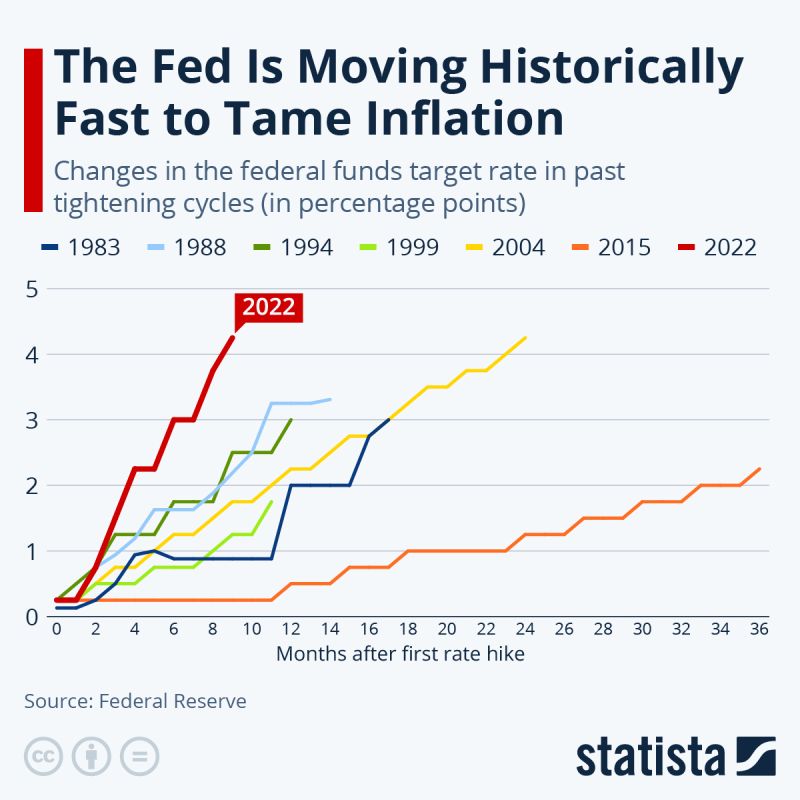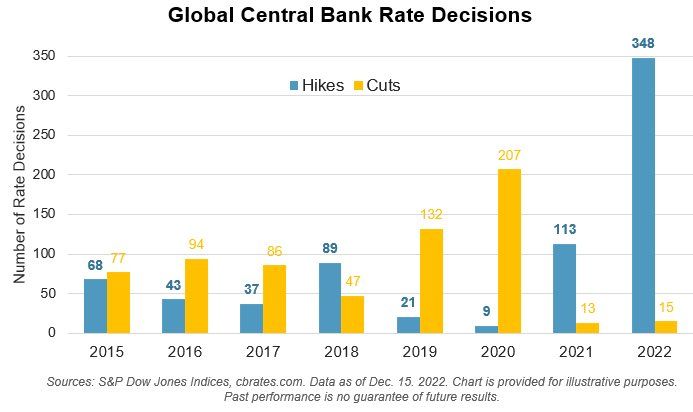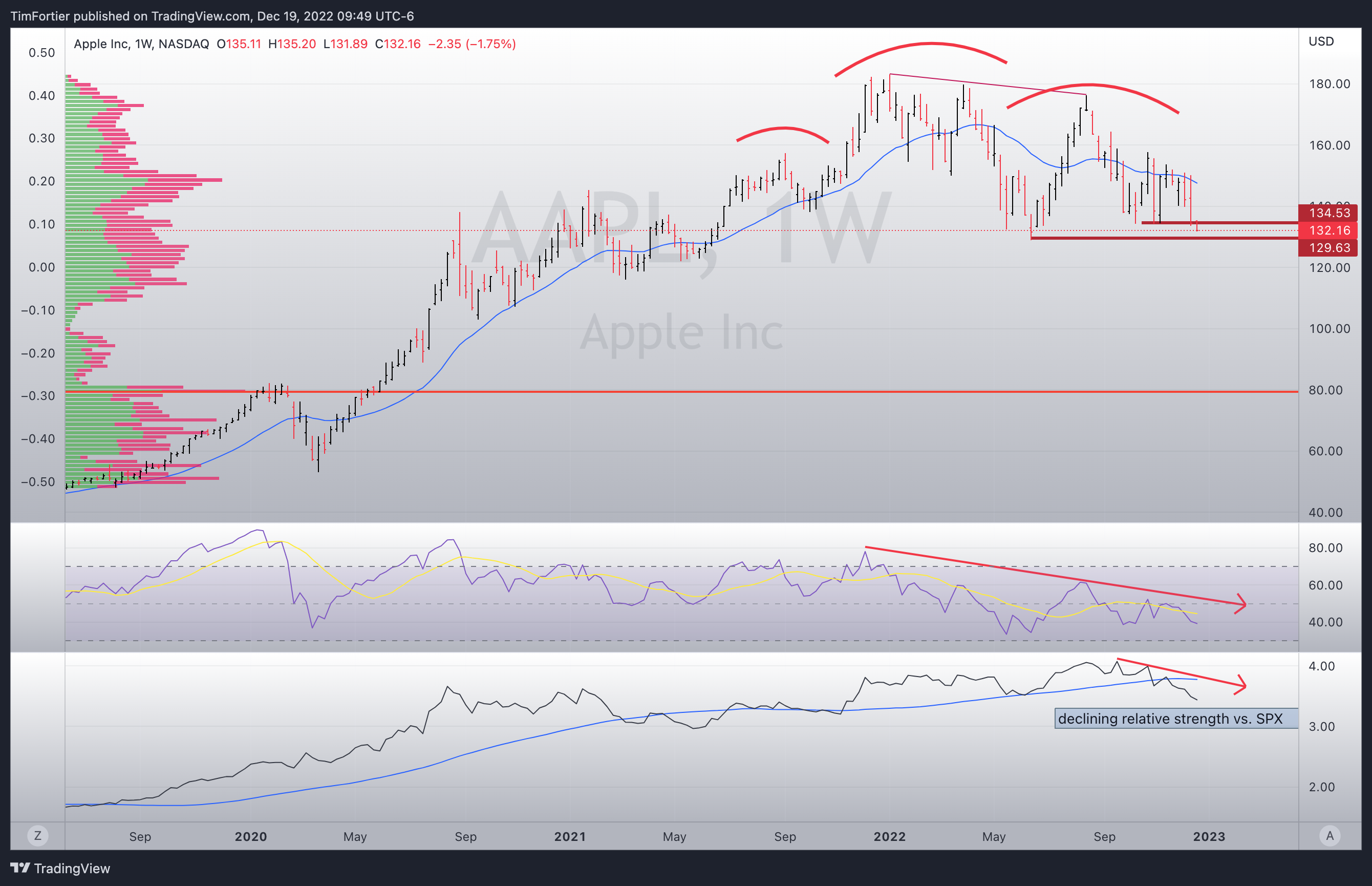Related Blogs
December 19, 2022 | Avalon Team
As most investors already know, the FOMC hiked interest rates again last week by another 50bps, establishing the Federal Funds rate at 4.25-4.50%.
If you listened to Jerome Powell during the press conference, you know that he minced few words and was decidedly hawkish. CPI data came in better than expected, although inflation over 7% is in no way a win, regardless of what the estimates were.
“It will take substantially more evidence” for the Fed to conclude that inflation is falling enough to stop raising rates. The market took the message to heart and has sold off by nearly 4% since December 14.
Chairman Powell continues to cite a target rate of 2% for inflation (not likely) and concerns over the tight labor market.
Good News: Inflation is falling. Bad news: You lost your job.
The concern being played out in the market is that the Fed will now overstay the current course of action and will send the economy into a recession. The upshot of all of this is that it has become more likely that interest rates may stay higher and for longer than some recent market bulls were hoping for.
This chart helps put the rate increases in perspective.
Never before has the Fed moved so fast. Making it more unusual is economic data coming from manufacturing and retail sales suggests that the economy is already slowing.
This next chart illustrates how central banks across the globe are acting in unison by increasing interest rates.
Following the FOMC meeting, the ECB announced that they too had become more hawkish, stating concerns over “substantial” inflation suggesting that more rate hikes could be expected in Europe as well.
As the old saying goes, “Don’t fight the Fed.” That can also be said about central banks, whether it be the ECB, the Bank of England, or any of them.
The impact is the same with weakened stock market internals as demonstrated by the falling Advance-Decline lines.
I have been writing for the better part of the last two years about how rising interest rates would have a detrimental impact on a stock market that was richly valued – especially technology stocks.
Internally, the market has steadily weakened since the beginning of 2021. We can see that by studying the pattern of lower highs within the NYSE Bullish Percent Indicator shown here.
Fewer and fewer stocks have been participating as the market has worked its way lower, interrupted by brief periods of bullishness.
The last shoe to drop in the market has been the mega-caps including the popular FAANG stocks.
One by one, they began their descent a year ago, beginning with a dramatic decline in Netflix (NFLX) shares. Today, we find Apple (AAPL) in technical trouble.
The stock has been in ongoing distribution now for several months. The current selling has taken the stock below some key support levels and AAPL shares are showing weaker relative strength vs. the market.
With a market capitalization of over $2T, APPL is the largest company in the U.S. market. Weakness in APPL will almost certainly carry the major averages lower with it.
This is fitting within a larger pattern that I see as well…
Back on December 9, my own Market Demand Indicator flashed and provided a sell signal. What this told me was that institutions were in the market selling as market supply was beginning to outstrip market demand.
Incidentally, this same indicator had gotten bullish in mid-October, amid pervasive bearishness, and captured over 300 S&P points to the upside before this more recent sell signal.
I will have more to say about my outlook for 2023 next week, but for now, investors are urged to be cautious as stocks may be delivering a lump of coal this Christmas.
If you have any questions or have been considering hiring an advisor, then schedule a free consultation with one of our advisors today. There’s no risk or obligation—let's just talk.
Tags

Free Guide: How to Find the Best Advisor for You
Get our absolutely free guide that covers different types of advisory services you'll encounter, differences between RIAs and broker-dealers, questions you’ll want to ask when interviewing advisors, and data any good financial advisor should know about you and your portfolio.






